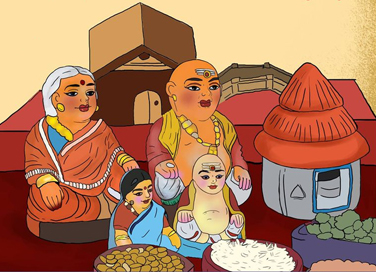The Festival of Dolls
- October 23, 2020


The Festival of Dolls
- October 23, 2020
Bommai Golu, also known as Bommala Koluvu, Kolu, or Gombe Habba, is a festival of colourful dolls celebrated in the South. During this festival, women in South Indian households bring out their collections of colourful dolls and set them on steps, to celebrate the nine days of Navaratri. Every house follows a different tradition based on the kind of dolls that have been collected over the years. Pride of place is given to the dolls that have been handed down for generations, from mothers to daughters. Depicted here are the popular Chebbiar Bommai dolls, an elderly couple symbolising prosperity, long married life and the wisdom of age.
To receive more such stories in your Inbox & WhatsApp, Please share your Email and Mobile number.
To receive more such stories in your Inbox & WhatsApp, Please share your Email and Mobile number.

Comic of The Month
The Naval Journey of India Book I
This book is the first of a three-book series that takes a deep and detailed look at India's Naval History and a deep insight into the lives of our men and women in white. But any series on the Indian Navy has to start at the very beginning - exploring India's celebrated maritime history. Join our little hero, Bharat, and his grandfather, Commodore Sagar, as they sail into the deep blue waters of time. Book I of The Naval Journey of India takes a sweeping look at India's maritime endeavours, how the seas impacted us over millennia and how the oceans made us who we are.